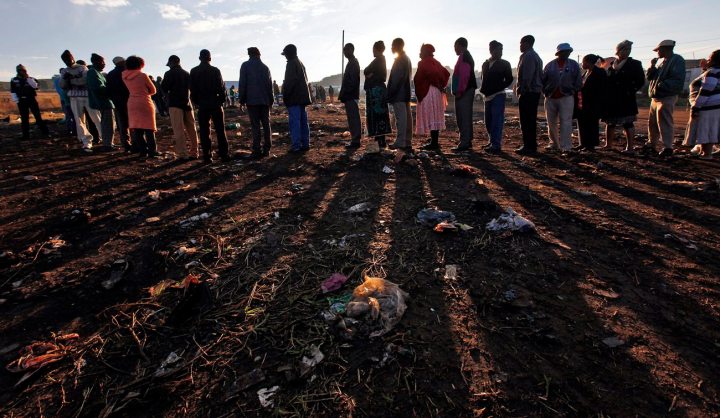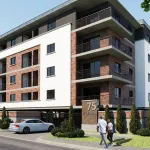South Africa
November by-elections: ANC and DA successes versus the pain of the smaller parties

October delivered a bumper holiday edition of by-elections: 22 wards were up for elections and 20 were eventually contested across eight provinces. This was the largest number of wards to be contested in one day since the 2011 municipal elections. A couple of wards did change hands and a couple more were strenuously defended. These by-elections boasted the mixed fortunes of some smaller parties, a sprinkling of independent candidates, requests for recounts and more. What this round of by-elections didn’t do however was settle the last few wards in Tlokwe. That’s another battle for another day. By PAUL BERKOWITZ.
With 22 wards contested across the country you might think there was scope for a few upsets in the voting. The majority of the 22 wards, however, weren’t expected to change hands, and didn’t. There was a scare here and there, a whiff of opportunity in the more heavily contested wards, but in the end only two wards changed hands, both of them lost by smaller parties to the ANC and DA.
The ANC and DA successfully defended all their incumbencies – 16 wards in the case of the ANC and four wards for the DA. The two parties were both at risk of losing a ward or two, but managed to hold onto all their wards
The result for one ward, ward 12 in Emfuleni (Vereeniging) in Gauteng, was still outstanding at the time of publishing. This will be updated as new information is received. The ANC had originally won the ward with 87% of the vote in 2011 (PAC 6%, DA 5%).
Uncontested wards and safe seats
There were two uncontested wards, both ANC incumbencies, which were retained unopposed. In the Free State, ward 8 in Nala (Bothaville) had been won by the party with 82% in 2011 (DA 9%, COPE 7%, FF+ 3%). In the North West the party retained ward 1 of Kgetlengrivier (Koster), a ward that had been won with 92% in 2011 (COPE 5%, DA 2%).
There were another nine wards (seven for the ANC and two for the DA) where the incumbent either increased its share of the vote or lost a negligible portion of the vote but maintained dominance in the ward. Most of these wards were safe both before and after the by-elections, but in one or two cases the parties tightened their grip on what had been risky wards.
In the Eastern Cape the ANC successfully defended ward 13 in Nkonkobe (Alice). The party won the ward in 2011 with 96% of the vote and, with only the PAC as competition, managed to increase its share to 98% on Wednesday. Voter turnout fell from 60% to 36%.
In KwaZulu-Natal the ANC maintained control of ward 8 in Emnambithi/Ladysmith with an increased majority. The ward was won with 69% of the vote in 2011 (NFP 15%, IFP 11%) and retained with 73% (IFP 18%, NFP 8%). NADECO received 12 votes (1% of the total), up from eight votes in 2011. Voter turnout fell from 57% to 40%.
In Limpopo, in ward 8 of Modimolle (Nylstroom) the DA retained its seat with 65% of the vote (ANC 29%, FF+ 6%). These shares are virtually unchanged from the 2011 results. Turnout fell from 56% to 35%.
In Mpumulanga, in ward 22 of Emalahleni (Witbank) the DA retained its seat with an increased share of the vote, making safer what had been a much closer contest in 2011. The DA had received 55% of the vote then (ANC 40%, FF+ 3%) and turnout in the ward was only 33% – just 223 votes separated the two parties. The party increased its share of the vote to 66% (ANC 34%) on Wednesday while turnout fell to just 15%.
The ANC also successfully defended two wards in Mbombela (Nelspruit) with slightly reduced shares of the vote. Ward 21 had been won with 95% of the vote in 2011 (DA 2%, PAC 2%) and was retained with 89% (independent 10%, PAC 1%). Turnout fell heavily from 57% to 19%.
Ward 34 had been won with 94% of the vote (APC 3%, DA 2%) and was retained with 91% on Wednesday (independent 9%, PAC 1%). Voter turnout fell from 67% to 34%.
In the North West the DA retained ward 6 of Ditsobotla (Lichtenburg) with a slightly increased share of the vote, while the ANC’s share declined and the FF+ had a relatively strong showing. The DA won the ward with 74% of the vote in 2011 (ANC 19%, FF+ 6%). On Wednesday the DA increased its share to 77% (ANC 12%, FF+ 11%). Voter turnout fell from 57% to 34%.
The ANC defended two Northern Cape wards, increasing its share of the vote in both.Ward nine in Sol Plaatje (Kimberley) was retained with an even greater majority. In 2011 the party had received 83% of the vote (COPE 11%, DA 4%). Its share of the vote rose to 92% on Wednesday, while the PAC’s share rose from 1% to 8%. Turnout fell from 61% to 28%.
In ward 4 of Gamagara (Kathu) the party went from a risky 53% of the vote (COPE 24%, DA 23%) to 65% on Wednesday (DA 35%). Voter turnout actually increased from 54% to 58%. The municipality was the subject of a damning report by the public protector in September.
Nearly-was and almost-rans
There were a number of wards where incumbent party maintained its seat but the win was slightly less convincing, either because of a sizeable drop in the share of the vote or because the share wasn’t that big anyway. With the exception of one DA ward, the ANC was the incumbent in all cases.
In the Eastern Cape,the DA and the ANC each defended one ward in Kouga (Humansdorp). There was excitement in both camps because the ANC holds 15 council seats to the DA’s 14, and the loss of the ANC ward to the DA would have resulted in a shift of control of the municipality. Both parties campaigned heavily in the municipality in the week leading up to the by-election.
The DA won ward five in Kouga with 56% of the vote in 2011 (ANC 44%) and retained the seat on Wednesday with 58% to the ANC. The ANC had requested a recount of the vote late on Wednesday night, but the result stood. Turnout was steady, dropping slightly from 59% to 56%.
The ANC retained ward 9 in Kouga although its share of the vote fell. The party had won the ward in 2011 with 65% of the vote (DA 34%) and retained the ward with 56% on Wednesday (DA 44%). Voter turnout was unchanged at 69%, reflecting just how hard the two parties had campaigned in the area.
In ward 2 in Mnquma (Butterworth) the ANC retained a risky seat with an even riskier share of the vote. The party received 49% of the vote in 2011 (COPE 25%, UDM 10%, DA 9%) and on Wednesday its share fell to 47%. The DA, UDM and PAC split the remaining 53% of the vote. Voter turnout fell from 47% to 31%.
In Gauteng, the ANC retained ward 96 in the Ekurhuleni metro but saw its share of the vote dip. The party had won the seat in 2011 with 83% of the vote (APC 6%, DA 6%, IFP 2%) but its share dropped to 65% on Wednesday (independent 38%, NFP 3%, IFP 2%). Turnout fell from 58% to 23%.
In KwaZulu-Natal the ANC was pushed by the IFP but managed to retain ward three in Endumeni (Dundee). The party had won the ward with 58% in 2011 (IFP 22%, NFP 15%) but could only muster 50% on Wednesday (IFP 39%, NFP 9%, independent 2%). Voter turnout fell from 60% to 44%.
The ANC retained ward 14 in Mfolozi (KwaMbonambi) but with a sharply reduced majority. The party had won the ward with 84% in 2011 (IFP 10%, NFP 5%) but could only manage 60% on Wednesday (IFP 35%, NFP 5%). The IFP had a very good showing, increasing the absolute number of votes it received from 324 to 865 even as the turnout fell from 64% to 46%.
In Mpumalanga the ANC maintained its incumbency in two wards but saw its share of the vote fall by about 16 percentage points in each ward. Ward 16 in Mkhondo (Piet Retief) had been won by the party in 2011 with 77% of the vote (DA 14%, IFP 4% NFP 3%). The party’s share of the vote fell to 60% on Wednesday (NFP 40%). Turnout fell from 51% to just 20%.
The party also retained ward 6 in Thaba Chweu (Sabie). The ward had been won with 94% of the vote in 2011 (DA 4%, APC 1%) but the ANC saw its share fall to 78% on Wednesday (two independents shared the rest of the vote between them). Turnout fell from 48% to 36%.
ANC, DA win wards at the expense of the NFP, MF
Two wards did change hands on Wednesday, both of them in KwaZulu-Natal and both of them were due to losses by smaller parties to the two bigger parties.
There are a handful of wards in the Ethekwini metro where the Minority Front (MF) did well in the 2011 elections, either winning the wards outright or narrowly losing them to the DA or ANC. These wards are in or near Chatsworth and Phoenix.
In four of these wards (wards 50, 51, 70 and 73) the MF narrowly beat the DA in the 2011 elections. Ward 70, up for by-election on Wednesday, was originally won by the MF with 44% of the vote to the DA’s 33% (ANC 9%, ACDP 8%).
On Wednesday, the MF couldn’t hold onto its seat, losing it to the DA, whose share of the vote rose to 58%. The ANC also increased its share of the vote (to 25%). The MF saw its share dwindle to just 10%.
The party will look to defend its one seat in parliament in next year’s elections but this heavy defeat is not a good omen.
Ward 2 in Okhahlamba (Bergville) turned on a knife’s edge. The NFP won the ward in 2011 with just 39% of the vote (ANC 37%, IFP 20%). On Wednesday the ANC nosed ahead and won the ward with 42% of the vote to the NFP’s 40% and the IFP’s 18%.
Fifty two votes separated the two parties in 2011, and the margin of victory on Wednesday was just 42 votes. Turnout fell marginally, from 65% to 58%, underlining how fierce the competition is in the ward.
Summary
The ANC and DA party machinery did their jobs on Wednesday; all incumbencies were successfully defended and each party won an additional ward to boot. The DA will be disappointed that it could not win the Kouga ward (and thereby the whole municipality) but it increased its share of the vote in every one of the wards it defended and won a ward off the MF.
The ANC should be happy with its performance, particularly with its defence of Kouga, but will be concerned over the loss of votes in some of its Gauteng, KwaZulu-Natal and Mpumalanga municipalities.
The smaller parties didn’t have a great day out but were probably using this round of by-elections to test their levels of support without actively campaigning. The IFP didn’t do too badly in the wards where it contested, and the PAC and FF+ held their own in the wards where they fielded candidates. The NFP, apart from its strong showing in Mkhondo, will need to bolster its support in KwaZulu-Natal. DM
Photo by Reuters.

















